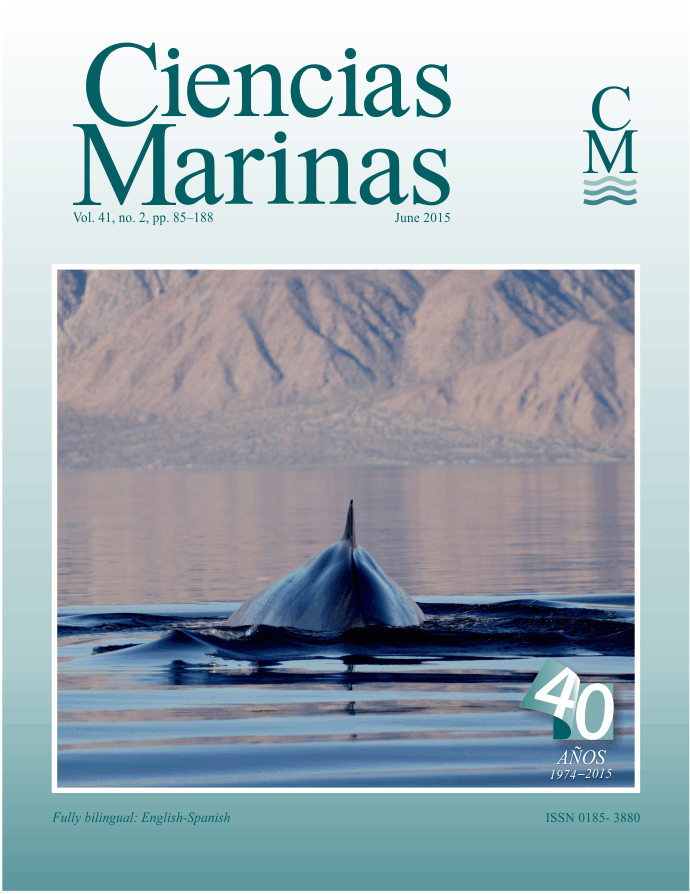Water–air carbon fluxes in the coastal upwelling zone off northern Baja California
Main Article Content
Abstract
An important challenge in marine science is to quantify the air–sea flux of carbon because of its possible relation to climate change and the decreasing pH in seawater. In coastal areas of Mexico, the magnitude and variability of carbon fluxes between the ocean and the atmosphere is almost completely unknown. Therefore, the objective of this research was to determine the variability of air–sea carbon fluxes in the upwelling system off northern Baja California. A one-year time series of carbon fluxes was generated from data on partial pressure of carbon dioxide (pCO2) from an oceanographic buoy installed immediately south of Punta Banda (Ensenada, Baja California), which measured salinity, temperature, and pCO2 in the water (pCO2water) and air (pCO2air) every 3 h during 2009. The study area presented several upwelling events with low sea surface temperatures (≤14 ºC), salinity <34.0, and high values of pCO2water, which resulted in an export of excess CO2 in the water to the atmosphere, identifying the area as a temporary source of CO2. In contrast, during the relaxation of upwelling, low values of pCO2water and intermediate surface temperatures resulted in the sea acting as a sink for CO2. The average daily flux was 0.6 ± 0.11 mmol C m–2 in winter, 2.8 ± 0.27 mmol C m–2 in spring, 0.3 ± 0.11 mmol C m–2 in summer, and –0.3 ± 0.03 mmol C m–2 in autumn, the positive sign indicating fluxes from the water to the air and vice versa. The annual balance of CO2 fluxes was 0.3 ± 0.06 mol C m–2 yr–1; thus, the system turned out to be a net source of CO2 from the ocean to the atmosphere.
Downloads
Article Details
This is an open access article distributed under a Creative Commons Attribution 4.0 License, which allows you to share and adapt the work, as long as you give appropriate credit to the original author(s) and the source, provide a link to the Creative Commons license, and indicate if changes were made. Figures, tables and other elements in the article are included in the article’s CC BY 4.0 license, unless otherwise indicated. The journal title is protected by copyrights and not subject to this license. Full license deed can be viewed here.

